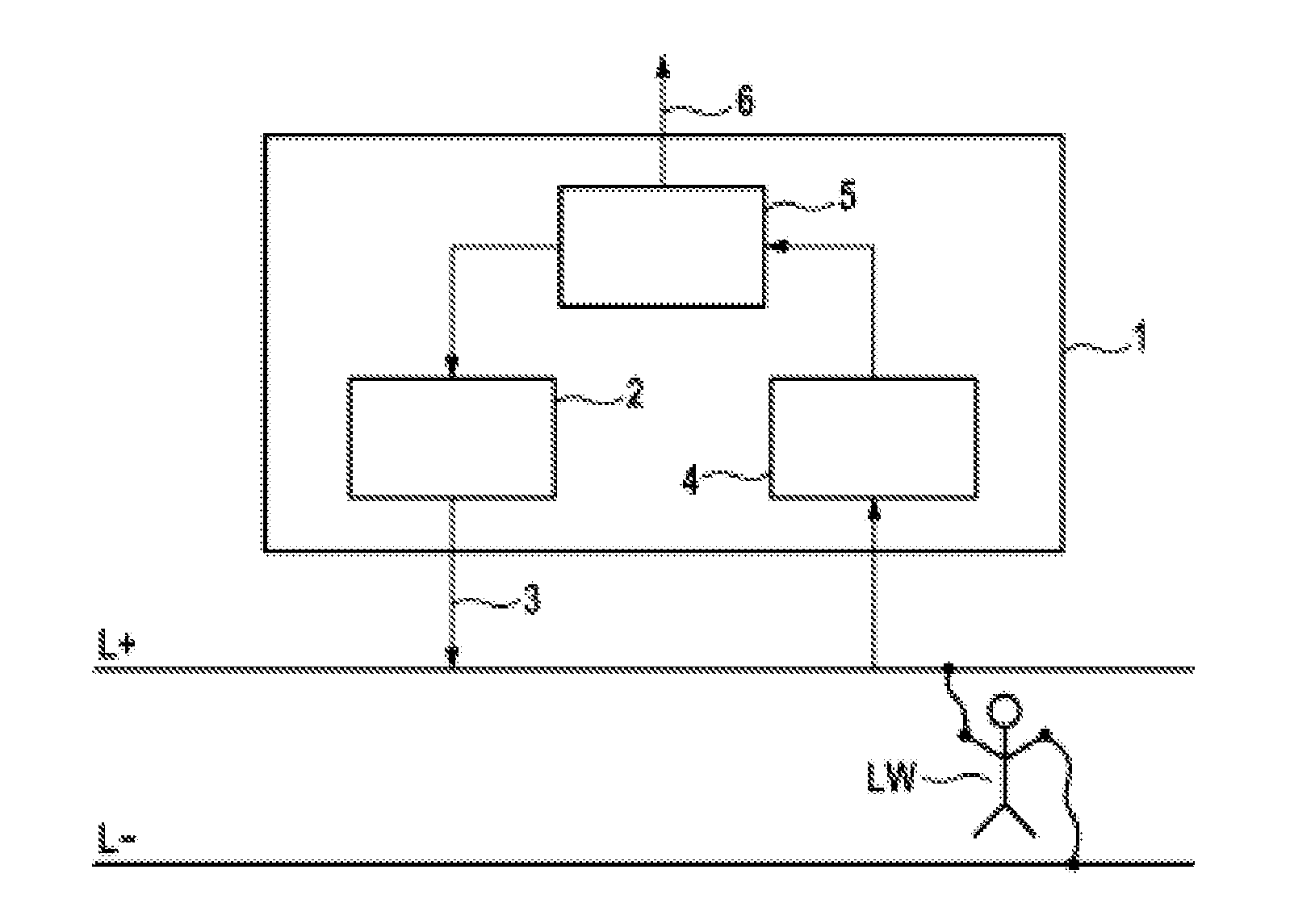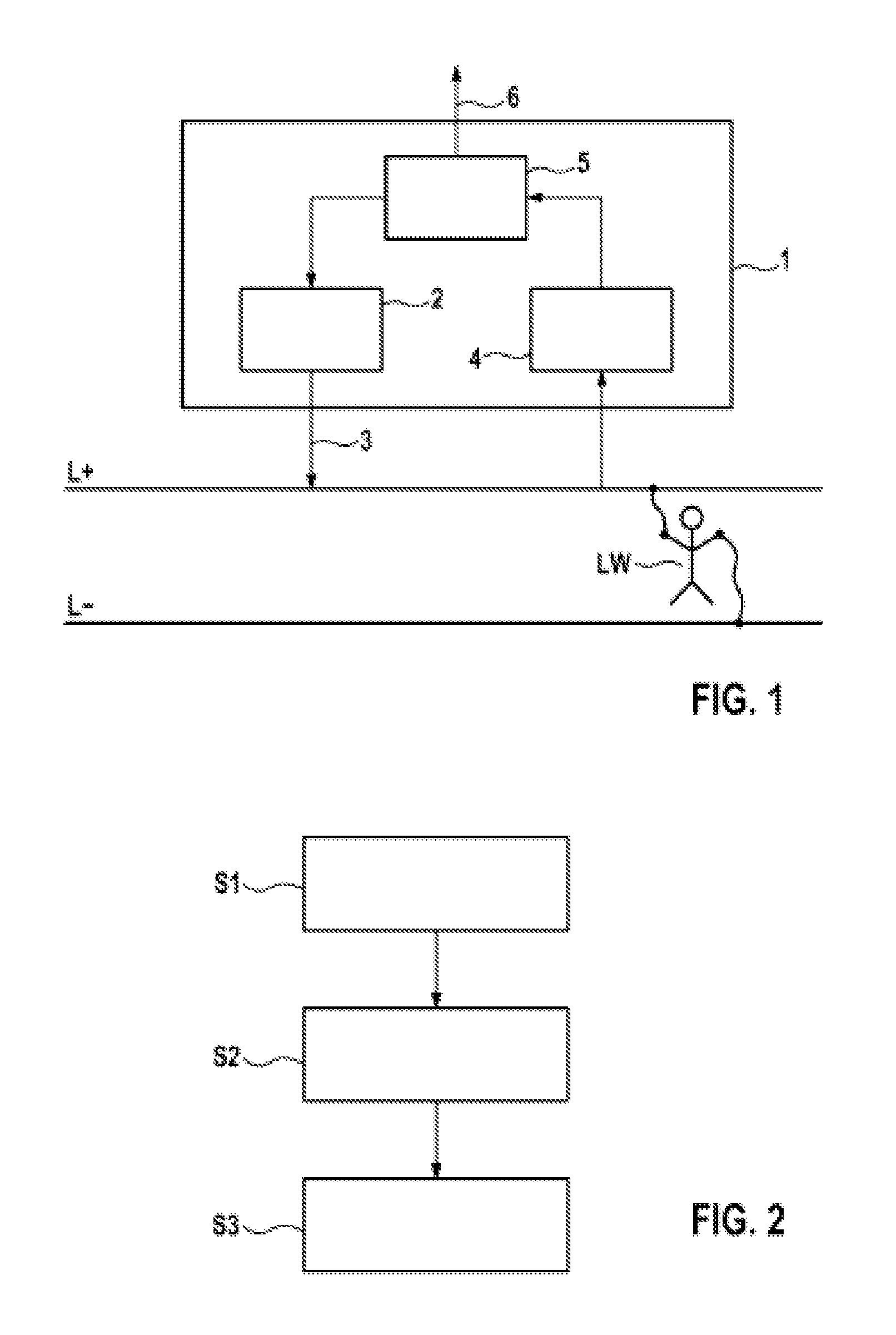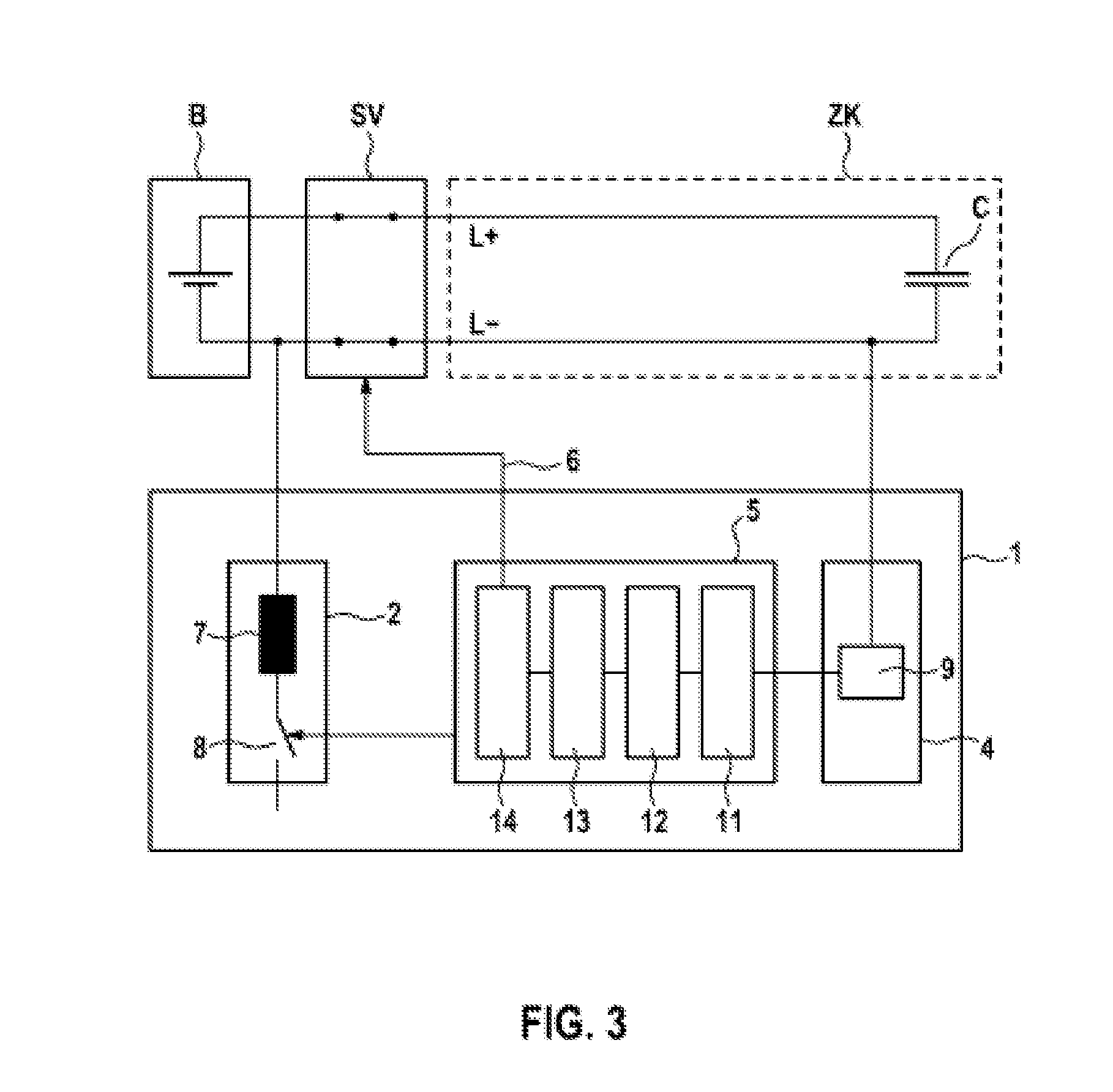Protection apparatus, method and power supply system
- Summary
- Abstract
- Description
- Claims
- Application Information
AI Technical Summary
Benefits of technology
Problems solved by technology
Method used
Image
Examples
Embodiment Construction
[0031]FIG. 1 shows a block diagram of an embodiment of a protection apparatus 1 according to the invention.
[0032]The protection apparatus 1 in FIG. 1 comprises a signal generator 2, which is coupled to a control device 5 and which is controlled by the control device 5. In addition, the protection apparatus 1 comprises a detection device 4, which is designed to detect a characteristic of a signal in the live lines L+, L− and to provide this signal to the control device 5. In addition, the control device 5 is designed to output a disconnection signal 6.
[0033]Finally, FIG. 1 comprises two live lines L+, L− of an IT grid, each of which lines is touched by a hand of a living organism LW, which is represented in the form of a stick man LW. The signal generator 2 is coupled to the live line L+in order to feed a first signal 3 into said line, and the detection device 4 is coupled to the live line L+ in order to detect the characteristic of the fed-in signal in the live line L+.
[0034]The con...
PUM
 Login to View More
Login to View More Abstract
Description
Claims
Application Information
 Login to View More
Login to View More - R&D
- Intellectual Property
- Life Sciences
- Materials
- Tech Scout
- Unparalleled Data Quality
- Higher Quality Content
- 60% Fewer Hallucinations
Browse by: Latest US Patents, China's latest patents, Technical Efficacy Thesaurus, Application Domain, Technology Topic, Popular Technical Reports.
© 2025 PatSnap. All rights reserved.Legal|Privacy policy|Modern Slavery Act Transparency Statement|Sitemap|About US| Contact US: help@patsnap.com



